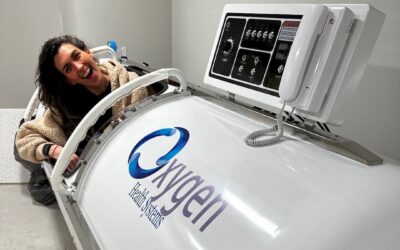The human body can naturally heal itself after an injury. That’s why a bruise on the skin quickly recovers, and broken bones mend in six weeks.
Doctors have realized that they can utilize the body’s self-healing nature on various body conditions to avoid costly surgical processes. Some conditions are more amenable to regenerative therapy than others. For instance, chronic illnesses such as diabetes, and stroke do not resolve independently and are typically lifelong. Chronic conditions that affect joints, tendons, ligaments, and nerves are more responsive to regenerative healing methods.
With the help of regenerative medicine, people suffering from chronic bodily injuries get a natural remedy and avoid costly surgical procedures/treatments. Keep reading to know more about this popular treatment, the various types, and the benefits.
What is Regenerative Medicine?
Regenerative medicine is a relatively new field that seeks to replace the organs or tissues damaged by injuries, trauma, diseases, or aging. It targets the underlying cause of the pain without necessarily having to rely on surgery or medication.
Regenerative medicine deals with engineering, replacing, and regenerating human cells and tissues. Usually, the doctor injects other healthy cells to the point of injury/source of pain so that they can trigger the body’s natural healing ability to repair the worn-out tissues.
When done well, regenerative medicine reduces pain, increases mobility, and avoids scarring with less downtime when compared to surgical options.
How Regenerative Medicine Helps In the Body’s Natural Healing Process
The body can heal itself, but sometimes, it needs help, and that’s what regenerative treatments do. Let’s look at the main types of regenerative medicine that help in the body’s natural healing process:
Stem Cell and Exosome Therapy
Stem cell treatment is one of the most common types of regenerative therapy. Stem cells are vital body cells that carry the potential to develop into different types of tissues.
When used in regenerative therapy, stem cells are typically collected from the injured persons’ bone marrow of fat. After the collection; the cells are then put in a centrifuge so that product is purified and concentrated.
The required stem cells are then injected directly into the injured part, developing into healthy cells and healing the damaged body part.
Exosome therapy is similar to stem cell treatment in that it uses the most potent part of the stem cell, the exosome from a donated source. The exosomes are either extracted from bone marrow or the placenta. Both stem cell and exosome therapies are effective, although exosome therapy promises a wider range of therapeutic options to include intravenous injections.
PRP Regenerative Therapy
PRP stands for Platelet Rich Plasma. The therapy is based on the concept that the plasma and platelets found in human blood can heal and repair damaged body organs/tissues.
To make the platelet-rich plasma solution, the doctor draws blood from the patient and processes it to create a more concentrated solution with more plasma and platelets. The concentrated solution is then injected directly into the tendons, ligaments or joints . PRP solution is the most commonly used modality in sports medicine to repair sport-related injuries.
Prolotherapy
Prolotherapy is another effective method that treats connective tissues or joints. Often, it is used to treat arthritis, degenerative disc disease, neck whiplash-related trauma, and spinal injuries in general.
Prolotherapy involves the application of an irritant to the injury site. The irritant could be a numbing agent such as lidocaine or any other solution containing dextrose. The concept behind it is that the irritant will trigger the body to initiate the self-healing mechanism and alleviate pain in the connective tissues.
Placenta Matrix Therapy (PMT)
PMT triggers the body to use its body repair mechanisms to heal itself. Usually, the doctors inject a small amount of placental tissue matrix product into the injured parts of the body.
This therapy is like a tissue allograft, whereby the doctor uses a special lab that carefully tests, purifies, and concentrates selected placenta lining extract. PTM is still a new concept, but it has been proven to improve torn ligaments, reduce back and joint pains and heal wounds quickly.
Peptide Therapy
Peptides are the building blocks for protein and they occur naturally in the body. The levels of peptides in the body decrease with time due to aging or illnesses. Peptide therapy aims to deliver more peptides into the body to promote pain relief and treat injuries. The peptides can be injected under the skin for general healing and anti-aging benefits or directly into injured tissue to stimulate local repair.
Hydro Dissection
Nerve and tissue hydro-dissection is a noninvasive process done to treat nerve entrapment and scarred and injured layers of muscle and tissue. This therapy aims to alleviate pain and allow you to continue with your daily activities normally.
This treatment requires a doctor’s expertise in the ultrasound-guided diagnosis of injury and ultrasound guidance of a needle used for hydro dissection. Hydrodissection provides a long-lasting relief when done by an expert.
Tendon Percutaneous Tenotomy
Tenotomy therapy is used to jump-start the body’s ability to heal itself by reducing scars, calcium deposits, and improving circulation. It is done using a special powered needle that uses combined energy from a pressurized jet of water and rapid needle vibration to break up diseased tissue.
The main aim of tenotomy therapy is to stimulate healing in chronic tendon injuries that would otherwise require extensive surgery with extensive downtime and uncertain results. Its benefits are typically enhanced by a concomitant PRP therapy.
Ozone Therapy
Medical ozone therapy uses a purified ozone gas derived from 100% medical oxygen to stimulate healing, reduce inflammation and eliminate local infections. It can be injected directly into an injured area, inhaled as an ozonated extra virgin olive oil or administered intravenously. As highlighted in this 2011 report, ozone therapy promises positive results in treating arthritis, activating the immune systems, and disinfecting wounds.
Is Regenerative Medicine An Ideal Option For You?
Too much pain can hinder you from accomplishing your daily tasks. Thankfully, regenerative medicine can be an ideal option for you if you need a non-invasive treatment. By working with the right specialist, you can say goodbye to the pain and have a faster recovery. Call 716.626.6301 or visit OWM Integrative Wellness for more info on steps you can take to begin your journey into healing.





